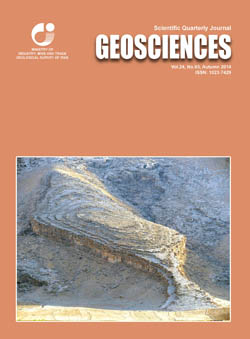Document Type : Original Research Paper
Authors
1 Ph. D. Student, Faculty of Geodesy & Geomatics Engineering, K. N. Toosi University of Technology (KNTU), Tehran, Iran
2 Assistant Professor, Faculty of Geodesy & Geomatics Engineering, K. N. Toosi University of Technology (KNTU), Tehran, Iran
3 Associate Professor, Faculty of Geodesy & Geomatics Engineering, K. N. Toosi University of Technology (KNTU), Tehran, Iran
4 M.Sc., Pars Asia Mining Company, Tehran, Iran
Abstract
Due to the extensive areas of potential mineral reserves in the country, it seems necessary to have a systematic approach to identify and convert indices of mineral deposits into mines. Existing various conceptual models of mineral deposits, variety of both quantitative and qualitative data to explore mineral deposits and the expertise and different interests, cause the mineral potential mapping process to be very complicated. So far, various methods such as the overlap index, fuzzy logic, neural networks and weights of evidence are used for modeling this complexity. Consideration the fuzzy nature of mineral exploration in the process of modeling exploratory data, applying expert knowledge and flexibility for all types of mineral deposits in the form of an integrated system is essential. Compared with other methods fuzzy inference system has stated characteristics. To verify this, in this study, a fuzzy inference system for modeling mineral potential was proposed and for the Chah Firoozeh copper deposit was implemented. The main stages of this research include fuzzifying factor maps using the appropriate membership functions and linguistic variables, combining factor maps using fuzzy inference (by creating if_then fuzzy rules database and using an appropriate decision-making model) and generating mineral potential map with defuzzification output.
In the resulted mineral potential map, porphyry copper mineralization prone area is located in the central regions with north-south extension. For evaluation, 24 exploration boreholes in the area are complying with the mineral potential map. Based on the four classification types of mineral potential map, the compliance rate was calculated as 63.64%, 75%, 63.95% and 80.23%. Obtained mineral potential map is more accurate in the very low potential areas and 81.52% of the holes with very low state are located properly. In addition, resulted mineral potential map was compared with the mineral potential map generated using only fuzzy operators and without fuzzifying factor maps. The comparison shows that the mineral potential map that was generated using fuzzy inference system, in four classifications used in this study has 6% greater compliance with the exploration boreholes in average.
Keywords

